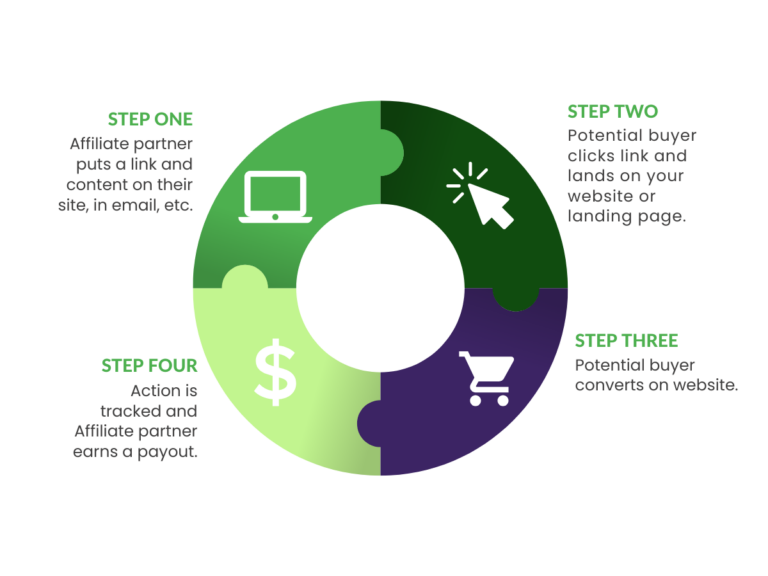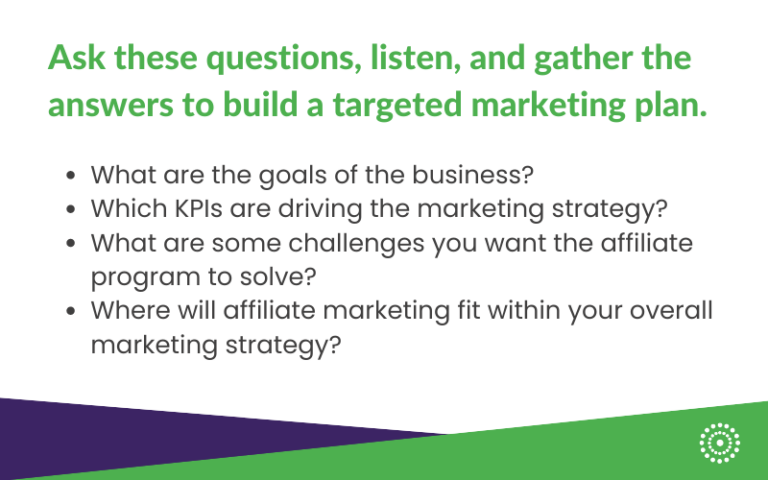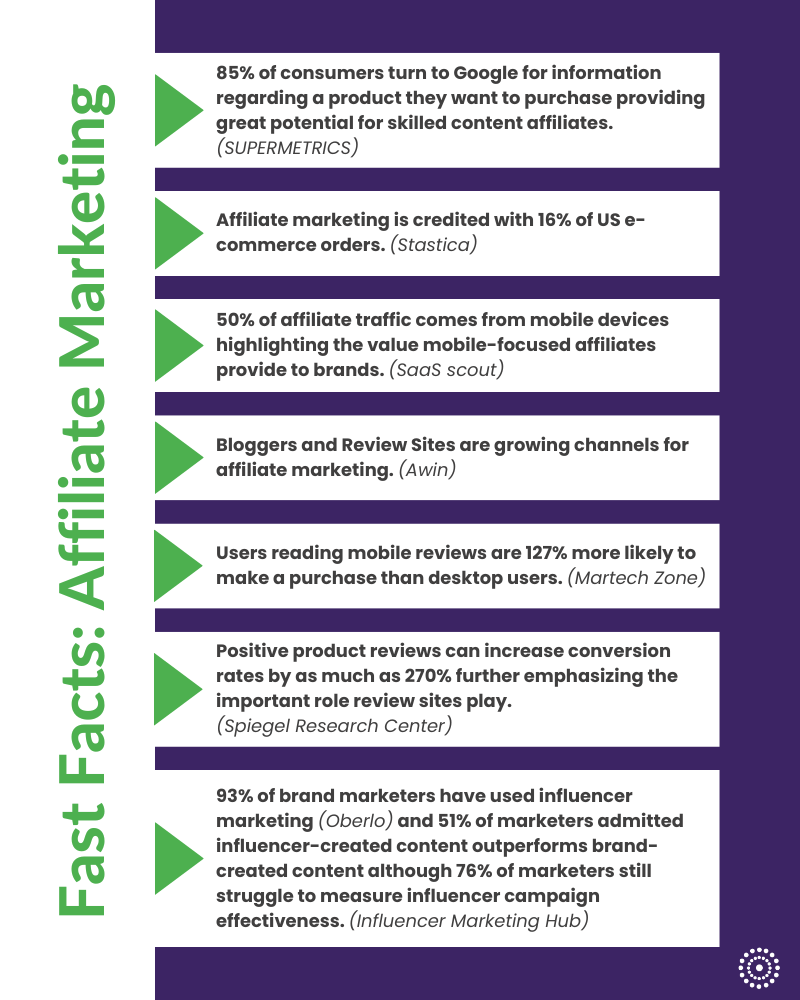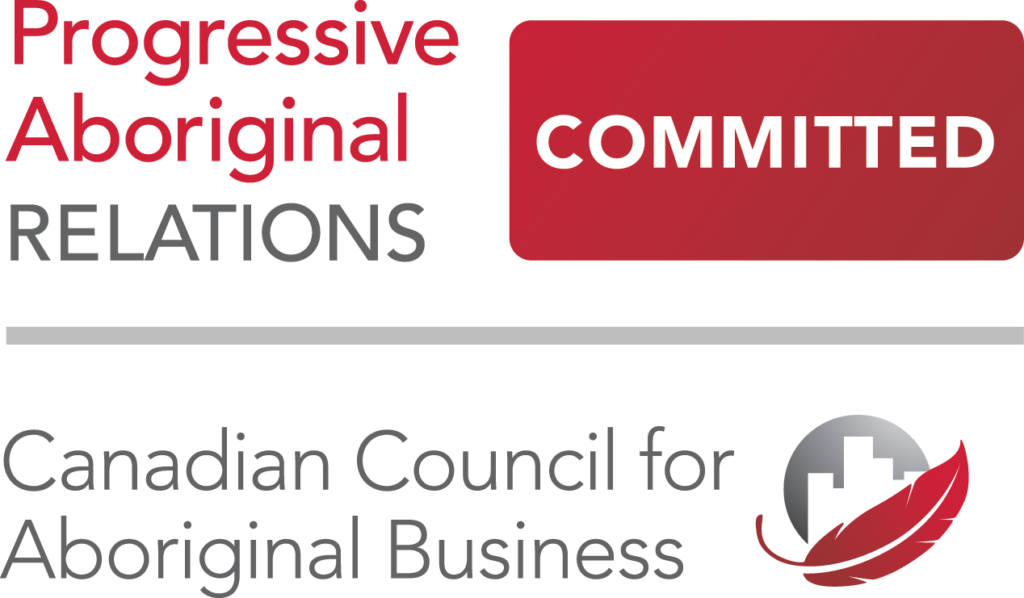In today’s ever-changing digital landscape, business leaders are challenged to reach enormous growth goals while controlling rising media costs. And, with the US e-commerce market expected to surpass $1.1 trillion in 2023 (Forbes, Insider Intelligence), the pressure to balance those divergent revenue growth and spend preservation goals only intensifies.
Crafting a strategic marketing plan that meets internal business objectives while remaining adaptable to shifting macro-environmental factors necessitates employing a multi-channel approach. This ensures the plan’s focus remains sharp while allowing for agility in response to marketplace dynamics. Incorporating a bespoke affiliate marketing program within the overall marketing strategy can provide businesses growth opportunities to increase traffic, expand the customer base, and increase revenue all while maintaining profitability.
Will Affiliate Marketing Fit into My Marketing Strategy?
Prior to adding any project to a business plan, it is important to evaluate the potential benefits as well as the potential pitfalls. Therefore, whether you are a CMO, an executive decision-maker, or a researcher seeking insights on affiliate marketing and its integration into a comprehensive marketing strategy, this overview serves as a valuable resource. It offers foundational information and, at best, acts as a roadmap to successfully incorporate affiliate marketing into your plans. Below you will find the pros and cons of affiliate marketing, including a brief history, answers to frequently asked questions, addressing misconceptions, and finally, a few facts, figures, statistics, and what comes next for affiliate marketing.
A Brief History of Affiliate Marketing
Affiliate Marketing got its start 30ish years ago, when William J. Tobin launched one of the first e-commerce websites, PC Flowers and Gifts, in 1989. Within 5 years the program grew to over 2,500 affiliates generating annual revenue in the millions. It didn’t take long for other businesses to see the success of Tobin’s program and follow his lead, most notably, a new online book retailer, Amazon.
Amazon took affiliate marketing to new heights, launching Amazon Associates, a public platform allowing members to sign up, publish banners that led shoppers back to Amazon, and earn a percentage of the revenue generated from those sales. The meteoric rise of Amazon is tied to the Amazon Affiliates program, the brand awareness it contributed to, and the consumer traffic driven through the affiliate program.
What is Affiliate Marketing / How Does It Work?
Affiliate marketing is a digital, performance-based marketing model where businesses work with affiliates who promote the business’s products or services for a commission. Affiliates earn commission or incentives for driving referred customers to complete a desired action on the business’ website. The “desired actions” may be leads, app downloads, website traffic, email sign-ups, sales, or other conversion models.
Affiliates can use various promotional marketing methods including websites, blogs, social media profiles, SMS, email campaigns, display ads, placements, product reviews, and more to drive their users to complete an action. Most brands operate their affiliate programs through third-party platforms that track traffic, leads, actions, revenue, and other KPIs, manage contracts, tracking links and payments to affiliates.

Key Benefits of Affiliate Marketing
- Cost-Effective Customer Acquisition: Compared to other marketing channels, affiliate marketing offers a cost-effective approach to acquiring new customers. Instead of spending heavily on traditional advertising, brands only pay commission when affiliates successfully generate sales or leads, resulting in a higher return on investment (ROI).
- Expanded Reach and Audience Targeting: Affiliates operate within specific niches, allowing businesses to tap into established user networks and audience bases. By partnering with relevant affiliates, companies can precisely target their desired customer base, expanding the brand reach into new marketings and demographics. Partnering with affiliates broadens audience reach and increases brand visibility.
- Performance-Based Results: Affiliate marketing provides measurable outcomes, allowing brands to track the effectiveness of campaigns in real time. Key performance indicators (KPIs) like conversion rates, click-through rates, average order value, cancellation rates, and return on ad spend offer valuable insights for optimizing strategies and maximizing returns.
- Enhanced Credibility and Trust: Affiliates often have loyal followers who trust their recommendations. When an affiliate endorses your product or service, it lends credibility and builds trust among potential customers. This can lead to higher conversion rates and customer acquisition.
- Increased Competitive Advantage: With lowered costs, increased returns, and an expanded audience, brands can focus on maximizing performance to gain market share. Experienced affiliate managers monitor the affiliate space to ensure competitive brands do not have a monopoly on sites with good engagement and traffic.
Potential Disadvantages of Affiliate Marketing
- Platform Choice and Integration: Choosing the right affiliate platform and making sure the program is set up properly can literally make or break an affiliate program before the first affiliate joins.
- Costs Can Escalate: From set up and launch fees to setting limits on payouts, to understanding what commission rates are competitive without overspending, these topics require either extensive research or practical experience and can turn the cost-effective channel into a money pit.
- Fraud: No matter the industry, bad actors will use any tricks available to make a profit, affiliate is not exempt from this. Careful screening, close monitoring, and clear rules for affiliates to follow can minimize the risks.
Aligning Affiliate Marketing with Key Business Objectives
After examining the opportunities vs. potential pitfalls of adding affiliate marketing to a business plan, the pros clearly outweigh the cons. However, taking a pro/con list and applying it to an individual business plan requires a solid understanding of the business objectives. When determining if affiliate fits within a company’s marketing strategy, education is essential.

- Brand Awareness and Exposure: Partnering with affiliates exposes brands to a wider audience, increasing brand visibility and awareness. By collaborating with affiliates, you can reach untapped customer segments and expand your market presence. Affiliates not only help introduce your brand to their followers but the increased brand mentions reinforce your presence among their audience, accelerating customer acquisition.
- Cost-Effective Market Expansion: Partnering with strategic affiliates will enable businesses to tap into new markets and customer segments. Brands looking to expand their reach geographically or penetrate niche markets can do so without investing heavily in untested areas by partnering with affiliates who have a strong presence in those areas.
- Gathering Consumer Data and Insights: With the right program setup and strategic partnerships, affiliate marketing generates valuable data and insights about customer behavior, preferences, and purchasing patterns. This data can inform future marketing strategies, product development, and customer segmentation, enabling data-driven decision-making.
- Revenue Generation: Affiliate marketing can significantly boost your revenue stream by driving sales and increasing customer acquisition. It provides an additional sales channel without the overhead costs associated with traditional marketing. And, partnering with the right affiliates who become powerful brand advocates can also increase conversions.
- Cost Optimization: The performance-based model of affiliate marketing optimizes marketing spend by paying based on actions rather than by ad campaigns. Thus, reducing customer acquisition costs, returning a higher ROI, and increasing the ability to scale campaigns with a proven success rate.
Mending Common Misconceptions about Affiliate Marketing
- Affiliate Marketing is NOT Dead. Despite the rumors to the contrary, affiliate marketing is very much alive and kicking. According to Statista, US affiliate marketing spending has steadily increased every year since it measured $1.6 billion in 2010 to today where US annual affiliate spend is expected to exceed $13 billion in 2023. Further evidence that affiliate marketing is not dead can be found in a recent Forrester report commissioned by Rakuten, 81% of brands use affiliate marketing programs as part of their overall marketing mix with 16% of all online orders attributed to affiliate marketing.
- Affiliate Marketing is NOT Bad for SEO. The truth is more nuanced, however, to clarify, Google doesn’t like or dislike affiliate marketing. Google is not a person, the algorithm benefits sites that follow their guidelines, have a good user experience and do the right things, like using well-optimized keywords and phrases to craft niche content. Content sites and bloggers account for almost 40% of all publisher commissions earned in the US according to AWIN, highlighting the growth and diversity within the affiliate space. Further evidence debunking this myth is found in affiliate traffic sources. More than 69% of affiliate traffic is sourced through SEO efforts (Post Affiliate Pro), in no small part thanks to the growing number of well-developed blogs and carefully designed landing pages.
- Affiliate Marketing is NOT Easy and Affiliate Programs will NOT Manage Themselves. Refuting these misconceptions is easy. Affiliate marketing programs are most successful when run by skilled, experienced affiliate managers who use data to make informed decisions, build meaningful relationships with affiliates, and pay close attention to detail. Far from easy—from the technical integration to the partner selection, approval, monitoring, and communication—affiliate marketing isn’t rocket science, but it is nuanced and ever-changing. For brands that care about traffic sources, accurate brand representation, and fraud protection, affiliate marketing requires careful planning and skilled expertise in management.
- Affiliate Marketing DOES NOT Take Credit for Sales That Would Have Happened Without It. Most veteran affiliate marketers have heard various versions of this story, and many (including this writer) have direct experience and firsthand intel from which we can untangle fact from fiction. Yes, there are affiliates that swoop in at the last minute and leapfrog other sources to earn credit for sales. Also yes, an equal or greater number of affiliates contribute to the consumer’s decision to purchase from a brand without earning credit. No, removing all non-content affiliates is not a good idea. Removal of legitimate traffic sources will negatively impact both the performance of an affiliate program, as well as the overall website performance. Why? There are hundreds of reasons, but the most important is Trust. In a recent study from Status Labs 83% of consumers revealed they don’t trust advertising and instead seek information from reviews prior to purchase. Instead, consumers want to do their own research, learn from other sources and
Fast Facts
Here are a few digital marketing statistics to support the case for a well-rounded digital marketing strategy that includes affiliate marketing.

*Source links below
Conclusion
Digital marketing and the pieces that comprise it; affiliate marketing, influencer marketing, public relations, search engine optimization, paid search, paid social, digital ad spend, email, mobile, etc. work most effectively in conjunction with one another. More and more, different marketing programs like affiliate, influencer, and major media placements are crossing over. Some brands are merging all into the affiliate program, while others utilize affiliate tracking to monitor performance, either way, success follows collaboration and transparency. To keep marketing strategies fresh and reach consumers where they are comfortable shopping, it is imperative to adapt to new technologies, stay open to new consumer journeys, and remain flexible enough to pivot strategies when micro and macro environmental factors that affect businesses dictate.
Including affiliate marketing as a piece of a multi-pronged marketing plan is essential not only to expand reach, reinforce brand awareness and reach niche audiences but to convert those consumers in a cost-effective way. With the potential for cost-effective campaigns, expanded brand exposure, and increased revenue opportunities, investing in an affiliate marketing program is a strategic move that, when crafted properly, will yield substantial returns for any business.












